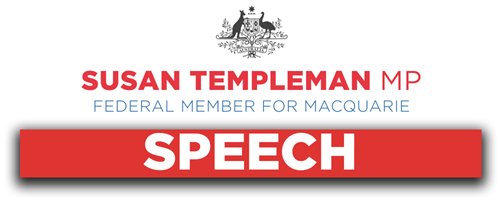
It isn't unusual for constituents in my electorate to post photos and video on Facebook of koalas in trees in their backyards. This is not something we go to a zoo or a facility to see, because we live in World Heritage, and it's World Heritage that creates the habitat for these koalas to not just pass through but to breed and establish themselves in. The bushfires, which went through 80 per cent of the Greater Blue Mountains Area World Heritage area, took a terrible toll on the koala populations that we had. Vast numbers were killed in last summer's bushfire crisis. It's estimated that around one-third of the koala population across New South Wales died. Nationally, the figure was 30,000. Locally, it has been devastating for those who care for koalas through WIRES and volunteer organisations and also for our NSW National Parks and Wildlife Service, who now go through bush not seeing the things they had seen for so many years.
The thing that troubles me is that we have had so little trickle-down of promised bushfire funding to try to support the existing koala populations or even get in early and find them. Volunteers did so much, just as they did during the fires. They organised parties to go in and rescue as many koalas as they could. What we're seeing is an incredibly endangered species. It is time for this government to get serious about what it's going to do to ensure these populations come back and then thrive.
In the first really comprehensive scientific study that has been done of the New South Wales koala population post the bushfires, which was done mainly on the North Coast, they found 70 per cent of the population had been killed. That's the sort of scale we're talking about. In my own area—in particular, in the Blue Mountains and the Hawkesbury—Science for Wildlife's executive director Kellie Leigh organised an incredible rescue operation when the bushfires began to take over at this time last year. These were koalas that had been fitted with radio collars. Authorities gave her team just two days to get in and try and save as many koalas as they could, because they thought that, if it all burnt, at least there'd be some good genes that had been rescued. Her volunteers searched through smoke and scorched earth. One person scaled a 130-foot tall eucalyptus tree to retrieve animals. They saved 10 adults and two juveniles. A koala named Houdini had to be left behind because there was just no time to extract him from a deep ravine. These were really difficult things to do. In the fires that burned through this area, Kellie thinks that around 1,000 koalas died.
The challenge we have is to try to bring all this back, and the lands that border national park are so important for this. One of the challenges is that there is pressure in relation to development for those areas. Two incredible WIRES volunteers, Morgan and John, have cared for 10 or 11 koalas just since September. They say they've just been smashed this season, because, while there is growth happening, if there aren't enough trees and fresh leaves for these very fussy koalas to make a meal of, we're going to lose them. Everyone knows that the biggest threat in our area is the destruction of habitat as the result of urban development. Kurrajong Hills is a real epicentre for koalas. Just recently an 800-acre farm has been subdivided into 10-acre lots. The EIS for this was done in 2007. It was done 13 years ago. The EIS said it was a poor habitat


